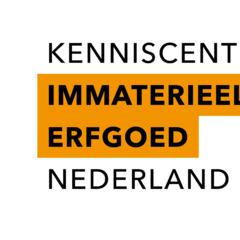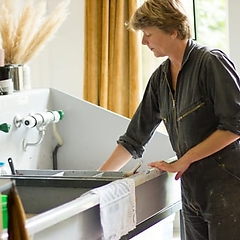Pottery painting is done on white, unglazed earthenware. A pottery painter paints the decorations on the earthenware, by hand. The Dutch word for this type of earthenware is plateel. The word derives from the Old French platel, meaning flat dish. The famous blue Delftware as well as the sturdy pottery from Makkum and the colourful Gouds plateel, all come under this header. Before the pottery painter can begin applying the paint, the clay is baked once. For series production the patterns are applied on the single baked bisque earthenware with a ponsief, a piece of tracing paper in which the pattern is punched out with a needle. By rubbing the ponsief with a bag of charcoal powder, the image is transferred. Now the image can be filled in with paint. When the painting is ready, the earthenware is covered with a layer of transparent glaze, after which it is baked for a second time on 1040 degrees Celsius.



